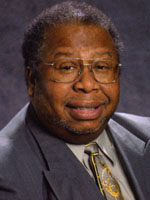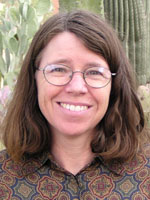
James W. Robinson
Louisiana State University

Isiah M. Warner
Louisiana State University

Mary Wirth
University of Arizona
Humanizing Science
Newly minted assistant professors of chemistry and new analytical chemists in government and industry came to the Analytical Chemistry Gordon Research Conference in a variety of ways. Isiah Warner was first introduced to the conference in 1978 as an assistant professor of chemistry at Texas A&M University. One of his colleagues, Thomas Vickery, wanted to know if he was going to attend the upcoming Analytical Chemistry GRC. Warner was vaguely familiar with the conference, but not in any great detail. Vickery quickly filled him in on the essentials. Warner soon attended his first GRC, beginning a love affair that would last for decades and culminating with his chairing of the Analytical Chemistry GRC in 1992.
The field of analytical chemistry was undergoing a sea change from sulfide qualitative schemes, volumetric and gravimetric analysis, and electrochemistry. Analytical chemistry grew to include various methods of spectroscopy and chromatography, such as nuclear magnetic resonance; infrared and atomic absorption; ultraviolet absorption and fluorescence; X-ray absorption, fluorescence, and diffraction; and plasma emission. Other techniques include mass spectrometry, two-dimensional high-performance liquid chromatography, liquid chromatography - mass spectrometry, gas chromatography, and liquid chromatography. Each method became a new subgroup with its own experts to interpret its results. Communication across these groups became very difficult, and so Mary Wirth changed the conference outline in 1996 to reflect a problem-oriented rather than a topic-oriented approach.
Analytical chemistry is a subdiscipline of the broader field of chemistry. Its goal is to answer the question, “What is this and how much is present in the sample?” Analytical chemists go to analytical meetings and publish in analytical and other chemistry-related journals. Most lab technicians only make analytical measurements, but the researchers develop new fields; that is, they develop new techniques, new instruments, and new applications to solve new problems at ever-decreasing concentrations and in the most nondestructive way possible. All analytical researchers must be able to cite the reliability of their data in rigorous detail, while always remembering that discussion of observations alone is philosophy. When hard data are added, it becomes science, and analytical chemistry provides the bridge between the two.
From the beginning Analytical Chemistry Gordon Conferences were designed to bring together representatives from industry, government, and academia, to ensure cross-fertilization between these sectors. Every two years a chair from academia is elected, and a chair from government or industry is elected in the alternating years. This helps ensure a good mix of analytical chemists and fields. The theme chosen for each conference is usually a cross between the chair’s area of expertise and the current “hot” analytical fields, including nanotechnology; medicinal, pharmaceutical, and forensic chemistry; and DNA analysis. Here experts can meet the leaders of their fields and discuss the problems of their particular topics.
The most rewarding experiences by far for all of us have been hearing outstanding scientists present their research from first principles. They made it logical and easy to understand–an ability that is the mark of true genius. One of the most memorable speakers was Milos Novotny, who first described capillary high-performance liquid chromatography and its use in distinguishing diabetics who do not have discernible medical symptoms from nondiabetics. (Strangely enough, medics objected to this technique on the grounds of it being “empirical.”) Other exciting speakers were Alex Pine, who spearheaded solid-state nuclear magnetic resonance; Egil Jellum, who introduced isodalt chromatography for cancer diagnoses; Dick Zare, who discussed the interaction of light with matter; Walt McCrone, who gave insight into the Shroud of Turin; Lynn Jelinski, who described how nerves transmit signals; Jim Callis, who first used near infrared to assess skin burns; John Fenn, who discussed his now Nobel-winning technique of electrospray ionization in mass spectrometry; and Alan Marshal and Graham Cook, who spoke on ion trap MS. The list of field leaders goes on and on.
Often the speakers never finished their presentations because there was so much discussion. Many friendships were formed with people from around the world. On Thursday nights we had a fine buffet dinner (in the early years you could have all the lobster you wanted). Finally, during the evening session, which was devoted to general science, the election took place. This event was followed by the “turtle test” for all new attendees, which opened with the question, “Are you a turtle?” Rather than acting as an extension of a textbook, the Analytical Chemistry Gordon Conference succeeded in personalizing and humanizing science. In the end the motto of the conference was always “discussion, not questions and answers.”